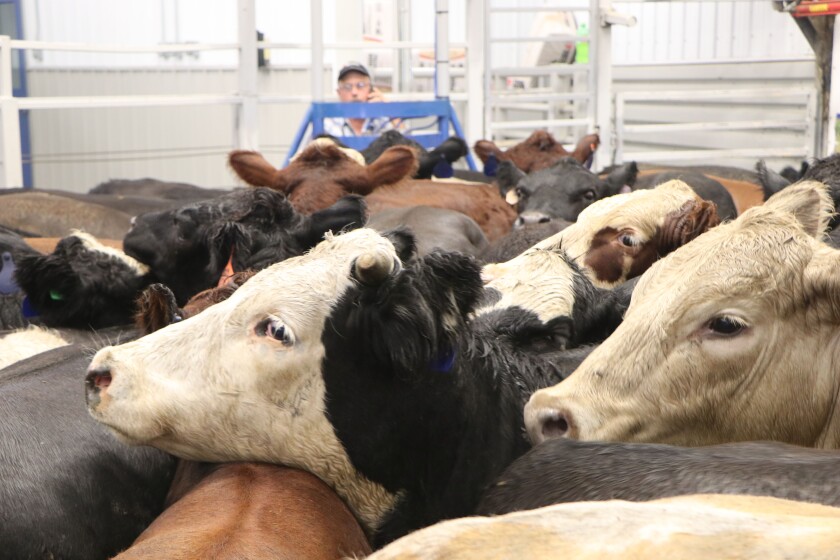Boost Your Knowledge with Bagley Risk Management
Boost Your Knowledge with Bagley Risk Management
Blog Article
Key Aspects to Think About When Finding Animals Threat Defense (LRP) Insurance Policy
When assessing alternatives for Livestock Threat Protection (LRP) insurance policy, numerous crucial variables necessitate mindful consideration to guarantee efficient threat monitoring in the agricultural industry. Choosing the ideal insurance coverage options customized to your specific livestock operation is critical, as is comprehending just how premium costs associate with the level of security offered.
Coverage Options
When taking into consideration Animals Risk Defense (LRP) insurance policy, it is essential to understand the numerous insurance coverage alternatives readily available to reduce dangers in the farming market. Animals Danger Protection (LRP) insurance coverage provides various protection choices tailored to satisfy the varied demands of livestock producers.
One more crucial insurance coverage choice is the endorsement duration, which determines the size of time the protection is in result. Producers can select the endorsement period that best fits their manufacturing cycle and market conditions. Furthermore, coverage degrees and rates differ based on the kind of animals being insured, offering producers the adaptability to personalize their insurance intends according to their particular demands.
Recognizing the different coverage choices available under Animals Risk Security (LRP) insurance is crucial for producers to make educated choices that successfully protect their animals procedures from market unpredictabilities.
Premium Expenses

Livestock Threat Defense (LRP) insurance supplies necessary insurance coverage choices tailored to mitigate threats in the farming industry, with a substantial facet to think about being the calculation and framework of premium expenses. These include the kind and number of animals being insured, the insurance coverage degree picked, the present market prices, historic price information, and the size of the coverage duration.
Insurance providers analyze historical information on animals prices and production expenses to determine a suitable costs that mirrors the degree of risk involved. It is necessary for livestock manufacturers to carefully assess premium expenses and protection alternatives to guarantee they are adequately safeguarded against possible economic losses due to adverse market conditions or unforeseen events.
Eligible Livestock
The determination of eligible animals for Animals Danger Protection (LRP) insurance policy protection involves cautious factor to consider of particular criteria and qualities. Animals kinds that are usually eligible for LRP insurance policy consist of feeder livestock, fed lambs, swine, and cattle.
Feeder livestock, for example, are frequently qualified for LRP protection if they drop within defined weight varieties. Lambs are an additional category of animals that can be considered for LRP insurance coverage, with factors such as weight and age playing an important duty in determining their qualification.
Prior to selecting LRP insurance coverage for livestock, manufacturers need to carefully review the qualification criteria detailed by the click here to read insurance policy provider to ensure their animals fulfill the necessary requirements for protection.
Plan Adaptability
Plan flexibility in Livestock Threat Defense (LRP) insurance allows producers to tailor protection to fit their certain requirements and run the risk of monitoring approaches. This flexibility empowers livestock producers to customize their insurance coverage based on aspects such as the sort of animals they have, market problems, and private danger tolerance levels. One essential aspect of policy flexibility in LRP insurance is the ability to choose coverage degrees that straighten with the manufacturer's monetary goals and risk direct exposure. Manufacturers can pick protection levels that safeguard them against possible losses as a result of changes in animals costs, ensuring they are web link effectively insured without overpaying for unneeded protection. Furthermore, LRP insurance supplies adaptability in plan duration, allowing manufacturers to choose coverage durations that finest fit their production cycles and advertising and marketing timelines. By using personalized options, LRP insurance policy allows producers to successfully manage their risk direct exposure while protecting their livestock procedures against unforeseen market volatility.
Cases Process
Upon experiencing a loss or damages, manufacturers can initiate the claims procedure for their Animals Danger Protection (LRP) insurance policy by without delay calling their insurance coverage service provider. It is crucial for manufacturers to report the loss asap to accelerate the cases process. When connecting to the insurance company, manufacturers will certainly require to give detailed info regarding the occurrence, consisting of the date, nature of the loss, and any type of appropriate paperwork such as vet documents or market prices.

After the evaluation is full, the insurance coverage provider will certainly choose relating to the insurance claim and connect the result to the manufacturer. The producer will obtain compensation according to the terms of their Livestock Danger Defense (LRP) insurance policy if the insurance claim is accepted. It is vital for manufacturers to be acquainted with the insurance claims procedure to make certain a smooth experience in the event of a loss

Verdict
In conclusion, when selecting Animals Danger Defense (LRP) insurance, it is necessary to think about protection options, premium costs, eligible animals, plan adaptability, and the cases process. These key factors will help ensure that farmers and ranchers are adequately shielded versus prospective dangers and losses connected with their animals procedures. Making an informed decision based upon these factors to consider can eventually lead to far better economic safety and assurance for animals manufacturers.
Livestock Danger Protection (LRP) insurance policy why not try this out supplies different coverage alternatives tailored to meet the varied requirements of animals manufacturers.The determination of qualified animals for Livestock Risk Security (LRP) insurance protection includes mindful consideration of specific standards and qualities.Plan versatility in Animals Danger Defense (LRP) insurance coverage permits producers to tailor coverage to match their particular demands and run the risk of monitoring techniques.Upon experiencing a loss or damages, manufacturers can initiate the cases process for their Animals Threat Security (LRP) insurance policy by quickly calling their insurance copyright.In conclusion, when choosing Animals Risk Defense (LRP) insurance coverage, it is important to think about coverage options, premium expenses, qualified livestock, policy versatility, and the cases process.
Report this page